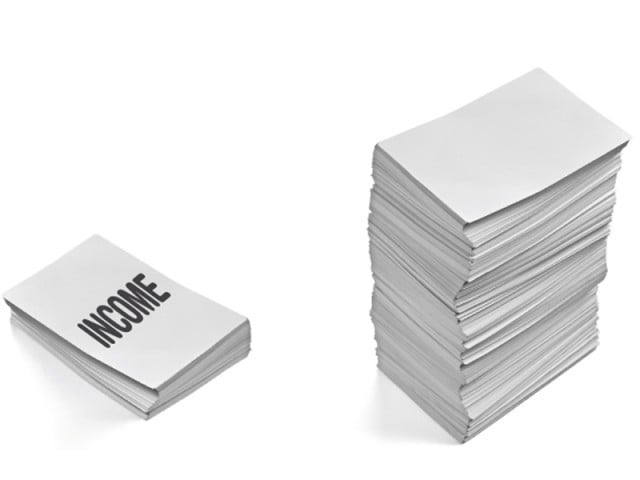
After-tax profit of EFU Life Assurance plummeted 43.9% to Rs183.6 million in the first quarter of 2013 compared to the same period in 2012 because of a sharp decline in the income of the shareholders’ fund, EFU Life Assurance Chief Strategy Officer Mohammed Ali Ahmed told The Express Tribune in an interview on Monday.
While premium net of revenues recorded a rise of 16% to Rs2.8 billion in the three-month period, the company’s investment and other income decreased 38% to Rs1.1 billion in the same quarter.
Ahmed attributed the decrease in investment income to “reduced unrealised capital gain on the company’s equity portfolio” compared to 2012.
In January-March 2012, the KSE 100-share index rose 21%. In January-March 2013, however, it was up 6.5% only.
“There is an unrealised gain this year as well, but not to the extent of last year’s first quarter,” Ahmed said. “As our business is mainly investment-linked and all assets to that extent are marked to market, a reduction in investment income has a corresponding impact on the investment-linked policyholders’ liabilities,” he said.
He added this reduction in investment income does not have a “material impact” on the overall surplus from the statutory funds.
In terms of assets, EFU Life Assurance is the largest private-sector life insurance company in Pakistan with assets of Rs37.9 billion in 2012, according to its latest annual report.
However, is a 16% increase in premiums good enough for EFU Life Assurance, even though the corresponding figure for Jubilee Life Insurance – another private-sector life insurance company of comparable size – for January-March 2013 has been substantially higher at 34.8%?

“Other companies are surviving on the back of their bancassurance business through dedicated banks in their group. Our business mix is 50/50 split between our direct sales force and bancassurance, and we don’t have the advantage of any dedicated large bank,” Ahmed said.
EFU Life Assurance has partnership with 12 banks that sell its insurance products using their nationwide branch network. However, these banks do not sell EFU Life Assurance products exclusively.
EFU Life Assurance’s net profit as a percentage of net premium is 6.4%. The comparable figure for Jubilee Life is 3.8%.
“It shows how much profit a rupee of premium generates,” Ahmed said, adding he considers the topline performance of EFU Life Assurance in the first quarter of 2013 ‘satisfactory’.
He said the company had booked a reversal in impairment of Rs207 million for certain available-for-sale investments in the shareholders’ fund in January-March 2012 due to improving stock prices.
“The full impact of the reversal in impairment was booked during 2012 and was reflected in the annual after-tax profit figure,” he said. “But during January-March 2013, there is no further reversal in impairment. The investment income of shareholders’ fund is still positive at Rs28 million in the first quarter of the current year.”
Effectively, any provision for impairment, or reversal thereof, is sensitive to the stock prices of these available-for-sale investments, he added.
While total revenues of the company decreased 7% to Rs3.9 billion in January-March 2013, management expenses shot up over 20% over the same period. However, saying that the total revenue includes the investment income, Ahmed said it has “really no direct link” with expenses.
“The correct comparison of expenses is with the premium base. Our premium increased 16% and the expense increase is in line with this growth,” he observed.
Published in The Express Tribune, April 30th, 2013.
Like Business on Facebook to stay informed and join in the conversation.


















1714034954-0/WhatsApp-Image-2024-04-25-at-1-48-04-PM-(1)1714034954-0-270x192.webp)

























COMMENTS
Comments are moderated and generally will be posted if they are on-topic and not abusive.
For more information, please see our Comments FAQ